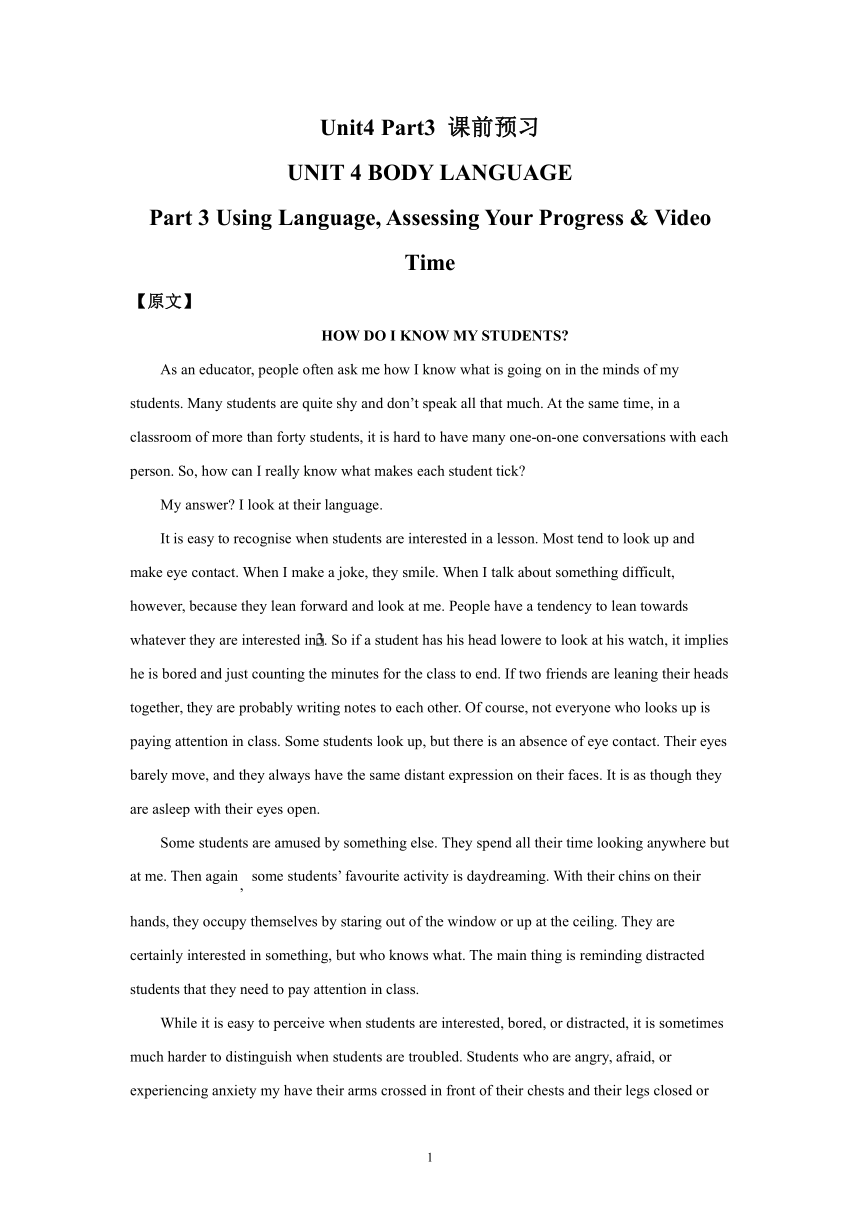
Unit4 Part3 课前预习 UNIT 4 BODY LANGUAGE Part 3 Using Language, Assessing Your Progress & Video Time 【原文】 HOW DO I KNOW MY STUDENTS As an educator, people often ask me how I know what is going on in the minds of my students. Many students are quite shy and don’t speak all that much. At the same time, in a classroom of more than forty students, it is hard to have many one-on-one conversations with each person. So, how can I really know what makes each student tick My answer I look at their language. It is easy to recognise when students are interested in a lesson. Most tend to look up and make eye contact. When I make a joke, they smile. When I talk about something difficult, however, because they lean forward and look at me. People have a tendency to lean towards whatever they are interested in. So if a student has his head lowere to look at his watch, it implies he is bored and just counting the minutes for the class to end. If two friends are leaning their heads together, they are probably writing notes to each other. Of course, not everyone who looks up is paying attention in class. Some students look up, but there is an absence of eye contact. Their eyes barely move, and they always have the same distant expression on their faces. It is as though they are asleep with their eyes open. Some students are amused by something else. They spend all their time looking anywhere but at me. Then again some students’ favourite activity is daydreaming. With their chins on their hands, they occupy themselves by staring out of the window or up at the ceiling. They are certainly interested in something, but who knows what. The main thing is reminding distracted students that they need to pay attention in class. While it is easy to perceive when students are interested, bored, or distracted, it is sometimes much harder to distinguish when students are troubled. Students who are angry, afraid, or experiencing anxiety my have their arms crossed in front of their chests and their legs closed or crossed, like they are guarding their bodies. Students who are sad or worried will nearly always wear a frown. They may also hide their faces in their hand like they are embarrassed or ashamed. Some students act this way merely because they are afraid of being called on by the teacher. However, if a student does not bother to brush her hair and her eyes are red from weeping, then I can infer that there are deeper issues at work. It could be that she is having serious conflicts with other students or at home. Whatever it is, I know I need to inquire and assess what is going on. Ultimately, my duty is helping every student to learn. Their body language lets me know when to adjust class activities, when to intervene, and when to talk to students individually, so they can all get the most out of school. Reacting to body language is an important component of being a teacher. 我如何了解我的学生? 作为一名教师(educator),人们经常问我,我怎么知道自己的学生在想什么。许多 ... ...
~~ 您好,已阅读到文档的结尾了 ~~

